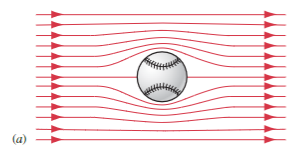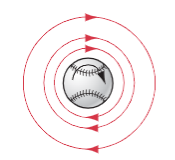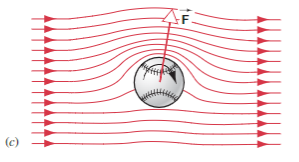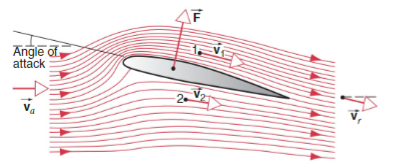Dynamic lift is the force that acts on a body due to its motion through a Fluid. This is not the same as Buoyancy, which uses Archimedes’ Principle in Fluid Statics. For example, an airplane uses dynamic lift as it moves through the air.
Another example of lift is the flight of balls. Lets analyze how it works.
A ball that is thrown regularly with non-rotational motion has Streamlines that look like such:

A ball that has has only Rotational Motion has Streamlines that look like such:
 Note that without the viscosity of air, the ball would not carry air with it in such a matter.
Note that without the viscosity of air, the ball would not carry air with it in such a matter.
A ball with both linear motion and Rotational Motion has Streamlines that look like such:

The velocity of the streamlines below is less than the that above the ball. Using Bernoulli’s Equation, we can conclude that the pressure of the air below the ball must be greater than that above the ball, so there is a force upwards, leading to the curvature of the thrown ball.
The lift acting on an airplane wing has a similar explanation.

The streamlines above the wing are more bunched up; therefore, the air flow sleep is greater above the wing. Using Bernoulli’s Equation, we conclude the pressure above is lesser, and there is a force upwards.
Another explanation is that the streamlines below hit the wing and are deflected downwards, contributing to an upwards lift.